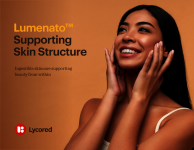LVMH conduct research on adolescent skin conditions
LVMH has conducted three tests on European and Japanese adolescent
skin care routines in a bid to develop skin care treatments for
this age group and later in life.
The studies look in detail at the skin behaviour in Japanese and European females from puberty to womanhood, with leading scientists from the East and West presenting a multi-disciplinary focus on skin. LVMH highlights the fact that in comparison to research on baby skin care, and anti-aging, there is little to no scientific work that treats the evolution and on-going modifications of the skin through adolescence - a stage which is in fact a turning point during which the long term health of the skin is determined and therefore in need of specific skin care. Conducting three studies, The Becoming of Adolescent Skin in Japan, The Adolescent Skin in Europe: Main Problems, and Young Japanese Skin Care and Attitudes Towards Beauty, the company is covering all bases when it comes to understanding young skin care. The first study, undertaken by Dr Katsuko Kikuchi at the Department of Dermatology Tokyo University, Japan, was developed to further understand the skin though its different biological mechanisms. Using first time clinical examinations, biophysical measurements and qualitative research undertaken over a two-year period, Kikuchi assessed three separate age groups for the specificities of the facial skin. Analysed clinically and biophysically and trialled using non-invasive methods, initial findings were compared with second tests 24 months later - with marked differences being found in the composition of each group, in particular the 13-15 age range. Results from a series of measurement tests that analysed the biophysical properties of the skin, and a questionnaire on lifestyle and skin condition concluded that the skin of this group was characterised by lower hydration of the stratum corneum, lower sebum and dark colour. The questionnaires showed this resulted from infrequent use of moisturisers and suncreens attributed to this, while in phase 2 the tests showed a significant increase in sebum secretion, luminosity and follicular plugs - with concern highlighted about acne and oily skin. In comparison, the second study conducted by Dr Nadine Pomarde in Paris, France, highlights the main problems encountered by European teenage subjects. Through studying a cross section of clinical and social studies into acne and indoor tanning, and her own work on the evolution of the skin and nutritional influence, Pomarde discovered that preventative solutions for acne were also a high priority. With acne affecting 75 - 95 per cent of European 13-18 year olds Pomarde discovered that stress and poor diet are a key factors of influence, with less only 1/3 actively seeking treatment for the problem. Pomarde highlighted the overall need for long term preventative care, with the search from many teenagers for a 'quick fix' solution adding fuel to the fire. Likewise, raising knowledge of healthy eating habits, and more importantly, knowledge of the correct cosmetics, skin care and sun care products to use. To compliment this research, the third study, by Kaori Amaha of ISPOS Tokyo, Japan, aimed to further measure and understand the beauty and skin care habits of teenagers in the region, in order to adapt product lines to target this mass market. Following a questionnaire that was distributed online, IPSOS and LVMH ran the test together to focus on teenagers beauty habits in general, questioning their skin type, lifestyle, skin care habits, and use of creams and cosmetics. Results reported that, unlike their European counterparts, the majority did not suffer with sensitive skin. Indeed, the data completed the findings of the dermatological study, "showing limited care of skin at a young age despite a general dissatisfaction with its condition - and a low interest in cosmetics that increases with age." the report said.





![[Getty Images]](/var/wrbm_gb_food_pharma/storage/images/_aliases/wrbm_tiny/publications/cosmetics/cosmeticsdesign-asia.com/china/china-focus-latest-developments-in-china-s-booming-beauty-market22/17370102-1-eng-GB/China-focus-Latest-developments-in-China-s-booming-beauty-market.jpg)
![YSL's LoveShine launch has sparked a demand surge in Japan. [YSL]](/var/wrbm_gb_food_pharma/storage/images/_aliases/wrbm_tiny/publications/cosmetics/cosmeticsdesign-asia.com/article/2024/04/24/ysl-loveshine-launch-propels-lip-gloss-sales-to-record-highs-in-japan-since-2020/17372064-1-eng-GB/YSL-LoveShine-launch-propels-lip-gloss-sales-to-record-highs-in-Japan-since-2020.jpg)
![There is significant scope for innovation and new launches in the hair repair sector, especially in soaring markets such as China. [Getty Images]](/var/wrbm_gb_food_pharma/storage/images/_aliases/wrbm_tiny/publications/cosmetics/cosmeticsdesign-asia.com/article/2024/04/24/croda-zeroes-in-on-hair-repair-solutions-as-damage-hair-concerns-surge-in-markets-like-china/17362731-1-eng-GB/Croda-zeroes-in-on-hair-repair-solutions-as-damage-hair-concerns-surge-in-markets-like-China.jpg)



![Lubrizol has extended its partnership with C-beauty major PROYA. [PROYA]](/var/wrbm_gb_food_pharma/storage/images/_aliases/wrbm_tiny/publications/cosmetics/cosmeticsdesign-asia.com/headlines/brand-innovation/lubrizol-bullish-on-potential-of-c-beauty-growth-potential/17362515-1-eng-GB/Lubrizol-bullish-on-potential-of-C-beauty-growth-potential.jpg)



